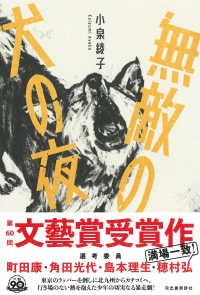Full Description
How did the Soviet Union control the behaviour of its people? How did the people themselves engage with the official rules and the threat of violence in their lives?
In this book, the contributors examine how social control developed under Stalin and Khrushchev. Drawing on deep archival research from across the former Soviet Union, they analyse the wide network of state institutions that were used for regulating individual behaviour and how Soviet citizens interacted with them. Together they show that social control in the Soviet Union was not entirely about the monolithic state imposing its vision with violent force. Instead, a wide range of institutions such as the police, the justice system, and party-sponsored structures in factories and farms tried to enforce control.
The book highlights how the state leadership itself adjusted its policing strategies and moved away from mass repression towards legal pressure for policing society. Ultimately, Social Control under Stalin and Khrushchev explores how the Soviet state controlled the behaviour of its citizens and how the people relied on these structures.
Contents
List of Tables and Figures
Abbreviations
Introduction
Immo Rebitschek and Aaron B. Retish
Part I. Negotiating Terror and Social Discipline in the 1930s
Controlling the Soviet Family through Alimony: Righteous Women, Starving Children, and Bad Fathers, 1925-39
Aaron B. Retish
Nashi/ne Nashi, Individual Smallholders, Social Control, and the State in Ziuzdinskii District, Kirov Region, 1932-9
Samantha Lomb
Social Control in the Workplace: Labour Discipline and Workers' Rights under Stalin
Maria Starun
"Such was the Music, Such was the Dance": Understanding the Internal and External Motivations of a Stalinist Perpetrator
Timothy K. Blauvelt
Part II. Forging Society in War and Peace
Soviet "Hard Labour," Population Management, and Social Control in the Postwar Gulag
Alan Barenberg
The Protection of Socialist Property and the Voices of "Thieves"
Juliette Cadiot
"They are afraid": Medical Surveillance in Soviet Russia, 1940-54
Amanda McNair
Part III. Post Stalin: Trajectories of Social Control
From the Street to the Court (and Back): Juvenile Delinquency in the 1950s
Immo Rebitschek
After the XX Congress: Liberalization and the Problem of Social Order
Yoram Gorlizki
From Mass Terror to Mass Social Control: The Soviet Secret Police's New Roles and Functions in the Early Post-Stalin Era
Evgenia Lezina
Social Control in Post-Stalinist Courts: Housing Disputes and Citizen Demand of Legality
Dina Moyal
Stalin's Socialisms
David Shearer
List of Contributors







